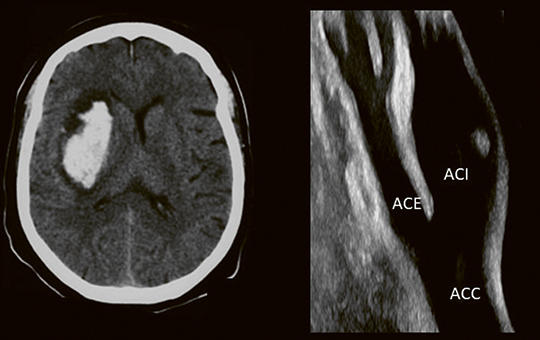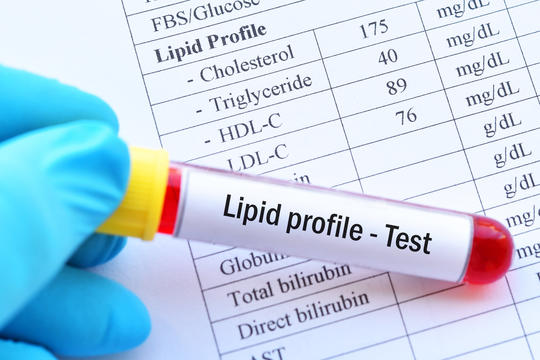The eLitMed.hu medical portal uses computer cookies for convenient operation. Detailed information can be found in the Cookie-policy.
Lege Artis Medicinae - 2021;31(11)
Content
[Cardiovascular prevention 2021 – Guidelines of European Society of Cardiology 2021. Special considerations]
[On 31 August 2021, the European Society of Cardiology published its guideline “Prevention of cardiovascular disease in clinical practice”. This guideline provides a comprehensive review about risk factors of atherosclerotic cardiovascular disease, their assessment, potential modifiers, treatment and prevention of the cardiovascular disease itself at societal and individual levels respectively. The previous guideline issued 2016, had to be updated due to the recent significant advances in risk prediction of cardiovascular disease on atherosclerotic background and due to the beneficial effects of treatment, emerging new drugs and therapeutic targets. The risk assessment system has undergone a major overhaul and now predicts the risk of fatal and non-fatal cardiovascular events together over a 10-year horizon and over a lifetime. In the new guideline, age plays a more important role in risk classification than before. The risk assessment and staged management of apparently healthy people or patients with established atherosclerotic cardiovascular disease, diabetes mellitus and other specific diseases or conditions are detailed. The positive impact of influencing risk factors, the years of life gained can recently be presented in a lifetime perspective, which will help to make an individually tailored decision on the extent of interventions, while taking into account also the patient’s preferences.]
[The history of acute stroke care in Hungary ]
[Stroke is one of the most frequent causes of death and the most important cause of permanent disability worldwide and also in Hungary. The Hungarian medical literature has mentioned this disease and has been giving recommendations for its treatment since 1690. Initially folk medicines, herbal preparations and phlebotomy were used as standard therapy. Later, cooling the head joined these methods. Pharmacy preparations emerged at the middle of the 19th century. From the middle of the 20th century, products of the pharmaceutical industry like blood flow enhancers and neuroprotective drugs were in the frontline of the acute care. Antihypertensive, antithrombotic and lipid-lowering medications became part of stroke prevention. Imaging techniques – mainly computer tomography of the brain and ultrasound examination of the cervical large arteries – have radically changed the diagnostics of cerebrovascular diseases from the middle of the 1980s. Since the 1990s, diagnostic and therapeutic decisions are based on reliable evidence from good quality clinical trials. Since the beginning of the 21st century, reperfusion treatments (intravenous thrombolysis and mechanical thrombectomy) represent the most effective emergency care. The current direction is the extension of the therapeutic time-window of reperfusion treatments based on sophisticated neruoimaging. This review provides a brief summary of the development of stroke care in the last three and a half centuries as reflected in the Hungarian medical literature. ]
[New approach in the treatment of elevated lipoprotein(a)]
[Lipoprotein(a) is a genetic trait, resembling the structure of low density lipoprotein (LDL). Due to its high atherogenicity it is an independent risk factor for atherosclerotic vascular diseases. External impacts (as dietary and lifestyle measurements) do not decrease its plasma level thus the primary and secondary cardiovascular prevention prefers primarily the drug therapy. However, widely used lipid lowering agents do not have any impact on its plasma level. Recently, the PCSK9 inhibitor monoclonal antibodies (evolocumab and alirocumab), the small interfering mRNA inclisiran, and particularly the antisense oligonucleotide targeting the LPA mRNS, further the clinical use of pelacarsen produced significant lipoprotein(a) lowering effect. Beyond the atherosclerotic vascular diseases, lipoprotein(a) plays an important role in the pathogenesis of the calcific aortic valvular stenosis, as well. The usage of the above-mentioned biological therapies in this condition is also promising. ]
[Relationship of adolescents’ eating behavior and motivations with self-control and risk perception]
[Obesity and related diseases caused by unhealthy eating form a serious public health problem already in youth. In terms of prevention, it is essential to explore adolescents’ eating behaviors and factors influencing their diet. Our study aimed to explore adolescents’ eating behaviors, its motivations and their relation to self-control and risk perception related to eating behavior. Participants were 374 high school students (48% males; mean age: 16 years, S.D.=1.5) from Szeged and Budapest. Self-administered questionnaire was used for data collection which assessed socio-demographics, eating behaviors, motivation, eating behavior related risk perception and self-control. Using factor analysis, we categorized eating behaviors (“junk food/drink consumption”; “health-oriented nutrition”; and “snacking and habit-oriented nutrition”), and eating motivations (“social, emotional and external motives”; “traditions and internal motives”; and “health motives”). According to correlation analysis, self-control was positively related to health-oriented nutrition and health motives and negatively to junk food/drink consumption and social, emotional and external motives. These two latter factors were associated with an increased risk perception as well. Our results draw the attention to strengthen self-control and explore the role of risk perception and eating motivations in school health education programs. ]
[A practical demonstration of critically assessing health economic analyses]
[During the critical assessment of health economic analyses, it is useful to present their uncertainties within a standardized framework. The aim of this research is to demonstrate how to use the procedural framework to identify, quantify and interpret such uncertainties through the examples of cell and gene therapies. Based on the review of methodological documents used by the Division of Health Technology Assessment at the National Institute of Pharmacy and Nutrition of Hungary (NIPN), and formalizing the current practice in its own framework, first we identify the uncertainty factors of the analysis and then examine their quantification in the submitted health economic model. Subsequently, we interpret their impact on the cost-effectiveness conclusion and determine the significance of all uncertainty factors. By applying the framework on the cost-effectiveness analysis of tisagenlecleucel as our example, we identified the following uncertainty factors. Although it is challenging to quantify, there is significant uncertainty related to the effectiveness of comparator procedure, which is due to single-arm clinical trials and the use of secondary data sources. The discount rate had a quantifiable and significant impact on both health gains and costs. Methods used to estimate relative effectiveness are also quantifiable but have less of an impact on the conclusions. The presented framework proved to be appropriate, with some limitations to document and arranging uncertainties of health economic analyses. It is advised to use this framework for reimbursement decisions for public financing. A possible subject of methodological development is the further formalization of identifying factors of uncertainty.]
[Liquor-draining shunt and abdominal surgery]
[Authors present three abdominal surgical cases of patients who underwent previous ventriculo- or lumboperitoneal shunt implantation. A laparoscopic and open cholecystectomy and a right hemicolectomy were performed. The recovery of all patients was uneventful. Abdominal surgery is safe in patients with persisting ventriculo- or lumboperitoneal shunt.]
[Dr. Gizella Barát the first female dentist]
[There is a long history of women in dentistry. Dr. Gizella Barát was the first female dentist in Hungary. She was among the first women admitted to the University in Hungary. Dr. Gizella Barát was a typical example of an emancipated, modern, woman, devoted to medical profession in the early 20th century. After graduation she was employed in the Polyclinic and started there her carreer at professor Armin Rottmann. We follow her life’s story with existing however incomplete biographyc data.]
1.
Clinical Neuroscience
Is there any difference in mortality rates of atrial fibrillation detected before or after ischemic stroke?2.
Clinical Neuroscience
Factors influencing the level of stigma in Parkinson’s disease in western Turkey3.
Clinical Neuroscience
Neuropathic pain and mood disorders in earthquake survivors with peripheral nerve injuries4.
Journal of Nursing Theory and Practice
[Correlations of Sarcopenia, Frailty, Falls and Social Isolation – A Literature Review in the Light of Swedish Statistics]5.
Clinical Neuroscience
[Comparison of pain intensity measurements among patients with low-back pain]1.
Clinical Neuroscience Proceedings
[A Magyar Stroke Társaság XVIII. Kongresszusa és a Magyar Neuroszonológiai Társaság XV. Konferenciája. Absztraktfüzet]2.
3.
Journal of Nursing Theory and Practice
[A selection of the entries submitted to the literary contest "Honorable mission: the joys and challenges of our profession" ]4.
Journal of Nursing Theory and Practice
[End of Life and Palliative Care of Newborns in the Nursing Context]5.
Journal of Nursing Theory and Practice
[Aspects of Occupational Health Nursing for Incurable Patients ]












